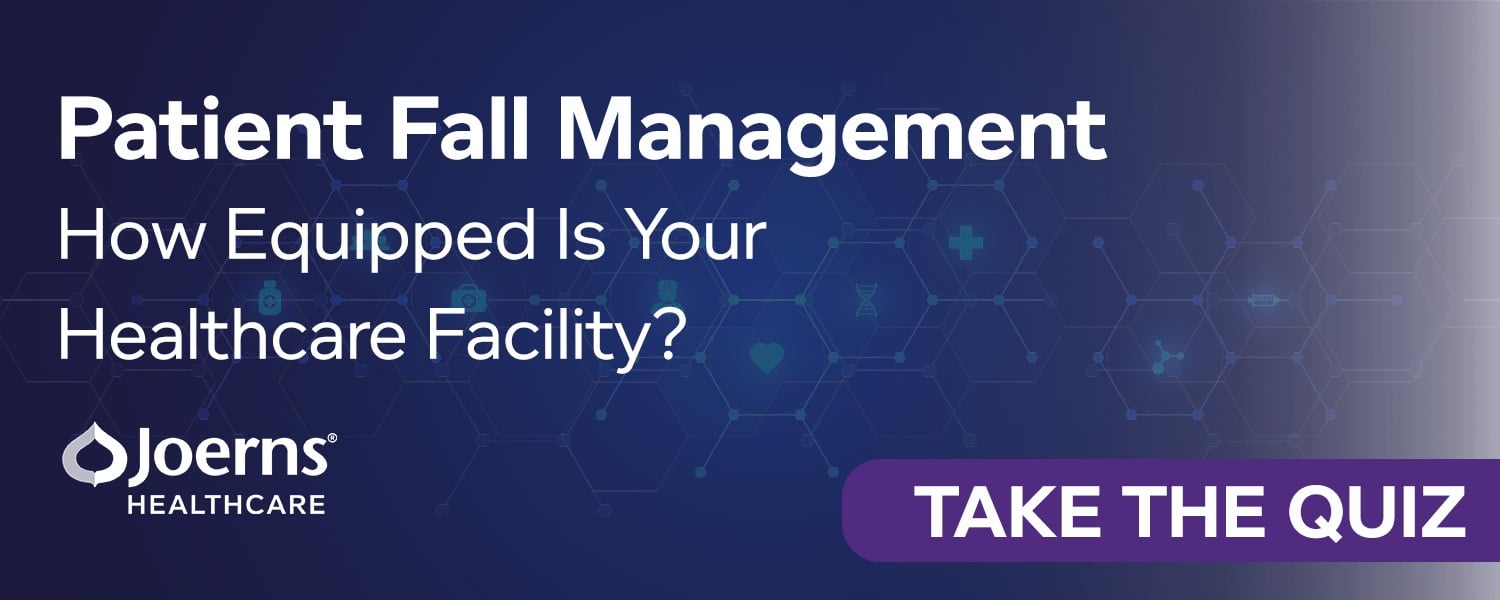For elderly and chronically ill patients, falls can be catastrophic. They can lengthen recovery time, make living complex, and sometimes cause deadly injuries. Those working in long-term care facilities or with the elderly will need to put a falls management program into place and continuously update it to ensure maximum safety.
Part of implementing a falls management program includes gathering awareness about the steps required to create such a plan. These steps include everything from assessing the number of patient falls in your facility to measuring the impact of newly implemented fall mitigation practices.
These strategies don’t have to be complicated to achieve results. Learn how you can implement a falls management program to improve your staff’s safety and the overall health of your patients.
5 Things to Consider When Implementing a Falls Management Program
The Roles and Responsibilities of Staff in Preventing Falls
Managing change and implementing best practices will involve determining the roles of each staff member in preventing and managing falls. The Center for Medicare and Medicaid has put falls that result in injury and death as an event that should never happen.
Before implementing a new falls management program, it’s important to identify the role of each healthcare team member.
- Members of your administrative team should set expectations and enforce policies that hold staff accountable.
- Educators should incorporate these new programs and policies into the workflow.
- Nurses can work with the patients themselves and assess their risk factors, and environmental services staff can keep floors clean, lay down no-slip pads in high-risk areas like the bathroom, and make sure bars and ramps are installed where needed.
Universal Fall Mitigation Practices for Patients and Caretakers
A change in environment can cause a patient’s fall risk to go up significantly. Whether they are returning home with a caregiver, moving to a different area of the facility for treatment, or being transported to a new facility, patients might become even more disoriented than normal. Education across all channels is crucial to keeping a patient from falling.
Those in charge of communications to transportation should stress the importance of safety and care to prevent falls. Offer suggestions for the patient to see specialists in mobility or the condition that makes them prone to falls.
Establishing New Practices for Staff
Depending on how large your healthcare team is, implementing new practices and procedures might pose a challenge. Every facility is different, and every patient is different.
Your falls management program should be tailored to the needs of every patient. Assess how many falls take place in your facility each year, and interview each member of your staff to understand what can be done differently.
The change will not happen overnight. Some practices will need more significant changes to your staff’s workflow. Leaders in your facility may need to host training workshops or find classes for certain members to take based on their involvement with high-risk patients.
Measuring Risks and Falls
When assessing your facility, make sure to take inventory and look at what is needed and what is outdated. Outdated equipment, furniture, and other assets can lead to higher fall risks.
Many tools to measure falls exist, but the two that are most commonly used include the Falls Risk Assessment Tool (FRAT) and the Identification of Seniors at Risk for Falls (IDSRF). Each tool has its own benefits. Each tool seeks to understand the types of falls and the factors that play into a fall, but both can be used to create plans for individuals at risk.
Creating and Implementing a Long-Term Fall Mitigation Plan
Fall mitigation is not a simple task. It requires continuous updates and constant planning. Some of the methods to keep in mind when considering long-term fall mitigation include audits of fall-related incidents, audits of existing inventory, and continuous emphasis on fall mitigation techniques. New staff must be trained, and old staff must be reminded.
Improve Outcomes With Falls Management Program
A facility for patients with chronic illness or advanced age needs to emphasize safety to patients and staff. To launch into this crucial activity, take our assessment — Patient Falls Management: How Equipped is Your Healthcare Facility? — to learn how mature your current practices are.
